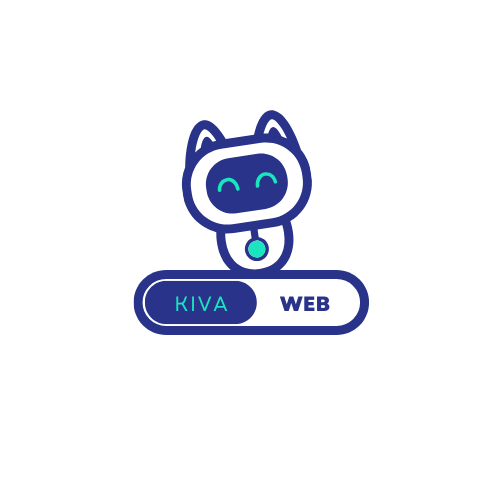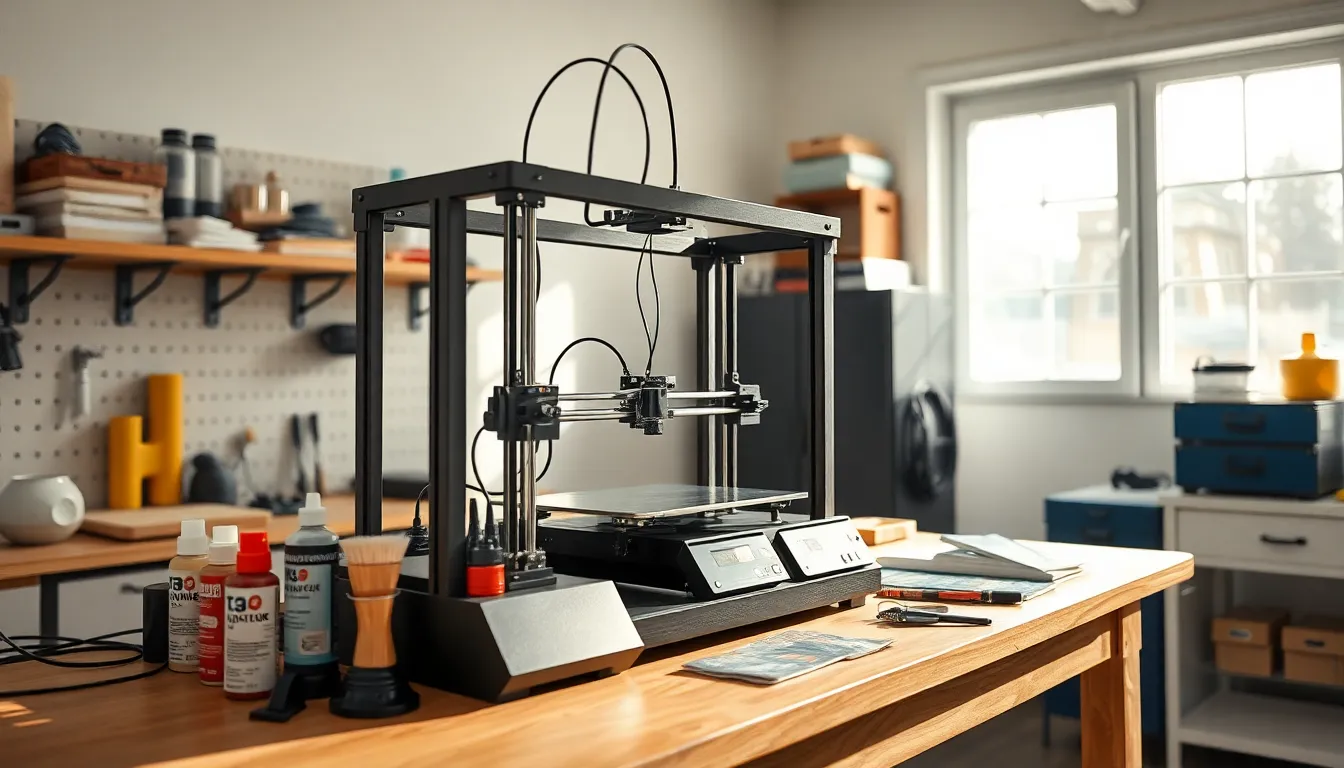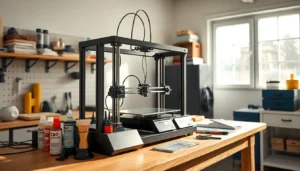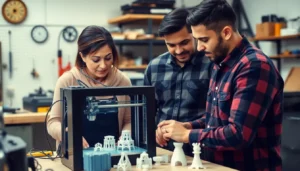Imagine a world where creativity knows no bounds and innovation is just a click away. Open-source 3D printers are revolutionizing the way people think about manufacturing and design. These remarkable machines break down barriers, allowing anyone from hobbyists to professionals to create anything their imagination can conjure—without the hefty price tag of proprietary models.
Table of Contents
ToggleOverview of Open-source 3D Printers
Open-source 3D printers revolutionize the landscape of additive manufacturing. These printers provide access to designs, software, and hardware, fostering collaboration among developers and users. Individuals can modify existing designs to suit specific projects, which enhances customization possibilities.
Cost-effectiveness stands out as a significant advantage of open-source models. Users can build their printers from low-cost components, reducing the overall financial investment compared to commercial machines. Many community-driven projects share resources through platforms like GitHub, encouraging shared learning and innovation.
Functionality varies across different open-source 3D printers, catering to diverse user needs. Some machines focus on precision for intricate models, while others prioritize speed for larger runs. Community support often facilitates troubleshooting, and frequent updates to software enhance performance.
Sustainability emerges as a crucial aspect of open-source printing efforts. Many projects emphasize eco-friendly materials and processes, promoting responsible manufacturing methods. Users can experiment with non-toxic filaments or recycled components, supporting environmental initiatives in the 3D printing domain.
Adoption of these printers continues to grow across industries. Educational institutions widely incorporate them into curricula, teaching students about design, engineering, and manufacturing. Entrepreneurs use open-source machines to prototype products affordably, expediting the journey from concept to market.
User forums and communities foster collaboration and knowledge sharing. Many enthusiasts connect online, exchanging tips, designs, and solutions, contributing to the collective advancement of open-source 3D printing technology. Resources available include tutorials, forums, and project websites, facilitating continuous learning and innovation.
Benefits of Open-source 3D Printers
Open-source 3D printers offer numerous advantages that enhance their appeal to users from various backgrounds. They provide a range of benefits like cost savings and customization options.
Cost-effectiveness
Cost-effectiveness stands out as a primary benefit. Users can construct their 3D printers using affordable components, resulting in significant savings compared to commercial models. Many open-source projects allow individuals to source parts locally, minimizing expenses further. Even hobbyists can engage in additive manufacturing without hefty investments. Platforms such as GitHub facilitate accessed designs and instructions, helping newcomers set up their printers without difficulty. Community contributions also lower costs by sharing knowledge, creating a robust ecosystem for affordable innovation.
Customization and Flexibility
Customization and flexibility enhance the user experience with open-source 3D printers. They allow users to modify designs to fit specific project requirements easily. Diverse applications cater to varied needs, enabling professionals to create bespoke prototypes and hobbyists to experiment freely. The availability of extensive resources fosters innovation, encouraging users to develop unique solutions. Flexibility in software options provides additional opportunities for tailoring the printing process. Enhanced adaptability promotes creativity and problem-solving, empowering users to push the boundaries of their projects through customization.
Popular Open-source 3D Printers
Numerous open-source 3D printers stand out for their affordability and versatility, making them popular choices among users.
Printer Models Comparison
Prusa i3 MK3S+ ranks high for reliability and print quality, often praised by the community. Creality Ender 3 remains an accessible entry-level option, known for its low cost and widespread modifications. LulzBot TAZ 6 offers flexibility, featuring a large build volume suitable for various projects. Another noteworthy model, Anycubic Vyper, is celebrated for its user-friendly setup and automatic bed leveling. These printers deliver distinct features that cater to different user needs, from hobbyists to more advanced users seeking specific capabilities.
Community Support and Resources
Strong community support enhances the open-source 3D printing experience significantly. Users benefit from active forums where they can share tips, troubleshoot issues, and exchange modifications. Resources like the Prusa Knowledge Base provide extensive tutorials, empowering newcomers to get started successfully. GitHub repositories often contain updated designs, allowing users to access community-generated improvements. Local meetups and online webinars foster collaboration and collective learning, creating an environment that encourages innovation and skill development. These resources collectively strengthen the open-source 3D printing community, enhancing overall user engagement and satisfaction.
Challenges of Open-source 3D Printers
Open-source 3D printers face several challenges that users must navigate to fully benefit from their capabilities.
Technical Knowledge Requirements
Users require a certain level of technical knowledge to effectively operate open-source 3D printers. Familiarity with electronics and software configurations often becomes essential. Individuals lacking this expertise might struggle with setup and maintenance. Understanding 3D modeling software can also enhance customization efforts. Users benefit from resources such as user forums and online tutorials, which provide guidance and troubleshooting support. Many thrive on the collaborative nature of these communities, gaining insights from shared experiences.
Availability of Parts and Upgrades
Sourcing parts and upgrades for open-source 3D printers can pose challenges. Not all components are readily available in local stores, leading users to rely on online suppliers. Component quality varies, potentially affecting print performance. Delay in shipping can hamper project timelines. Some enthusiasts adapt by using alternative parts from different models, but compatibility remains a concern. Regularly updated repositories and manufacturer websites can provide necessary information to find suitable upgrades. Staying engaged with community networks also helps access shared information on trustworthy suppliers.
Conclusion
Open-source 3D printers are reshaping the landscape of manufacturing and design. Their accessibility and adaptability empower users to explore their creativity without the burden of high costs. The collaborative nature of open-source projects fosters innovation and community support, making it easier for individuals to troubleshoot and enhance their printing experience.
While challenges exist, the wealth of resources available through forums and tutorials helps users overcome obstacles. As more industries recognize the benefits of open-source technology, the movement continues to grow. With ongoing advancements and a strong community backing, open-source 3D printers are set to play a crucial role in the future of fabrication and design.










